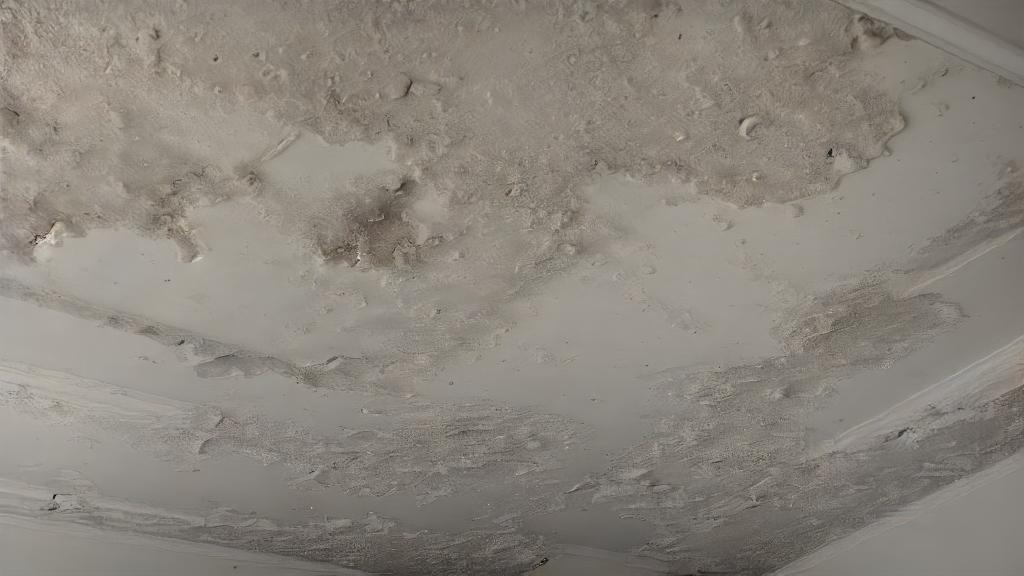Introduction
Water damage and mold growth on ceilings can be a homeowner’s nightmare, often signaling underlying issues such as roof leaks or plumbing problems. In this comprehensive guide, we delve into the causes, signs, and removal of water damage ceiling mold to help you understand the severity of the situation and take appropriate action.
Causes of Water Damage in Ceilings
Roof Leaks: A Common Culprit
Roof leaks stand out as one of the primary causes of water damage to ceilings. Several factors can contribute to roof leaks, including aging shingles, storm damage, cracked roof flashing, clogged gutters, and faulty chimney seals. Even seemingly minor issues like leaky skylights or damaged roof vents can lead to significant water infiltration over time.
Plumbing Issues
Beyond roof leaks, plumbing problems within the home can also result in water damage to ceilings. Burst pipes, leaking fixtures, and faulty connections can lead to moisture buildup within the ceiling cavity, fostering an environment conducive to mold growth.
Condensation and Humidity
Excessive humidity and condensation in attics or crawl spaces can promote moisture accumulation on ceilings, providing an ideal breeding ground for mold. Poor ventilation exacerbates this issue, trapping moisture and allowing mold spores to thrive.
Also Read: Ceiling Damage from Water: Understanding the Causes and Solutions
Signs of Water Damage Ceiling Mold
Visual Indications
One of the most obvious signs of water damage ceiling mold is visual discoloration. Mold typically appears in shades of black, green, brown, blue, or pink, often spreading across affected areas. Discoloration may be accompanied by cracking, warping, or bubbling paint, indicating moisture infiltration beneath the surface.
Musty Odors
The presence of mold is often accompanied by a musty or earthy odor, particularly noticeable in enclosed spaces like attics. A persistent, pungent smell emanating from the ceiling could indicate hidden mold growth and should prompt immediate investigation.
Health Effects
Mold exposure can have adverse health effects, ranging from mild respiratory irritation to severe allergic reactions. Symptoms may include nasal congestion, coughing, throat irritation, eye irritation, skin rash, and exacerbation of asthma symptoms. Prolonged exposure to mold spores may contribute to chronic respiratory conditions and other health issues.

Removal and Remediation
Professional Inspection
Upon detecting signs of water damage ceiling mold, it’s crucial to enlist the services of a certified mold testing and remediation company. Professionals can conduct a thorough inspection to assess the extent of mold infestation, identify underlying causes such as roof leaks or plumbing issues, and develop a comprehensive remediation plan.
Mold Removal Process
Mold removal is a complex task that requires specialized equipment and expertise. For minor mold infestations (less than approximately 10 square feet), homeowners can follow specific guidelines for safe removal. This includes wearing protective gear, fixing sources of water leaks, scrubbing mold from hard surfaces with appropriate solutions, and ensuring thorough drying and ventilation of the affected area.
Prevention Strategies
Preventing water damage and mold growth begins with proactive maintenance and vigilant inspection. Regular roof inspections, prompt repair of leaks, proper ventilation, and humidity control are essential preventive measures. Additionally, addressing plumbing issues promptly and maintaining clean gutters can help mitigate the risk of water infiltration into ceilings.
Also Read: Ceiling Damage from Water: Understanding the Causes, Signs, and Remedies
Conclusion
Water damage ceiling mold poses significant risks to both property and health, necessitating prompt detection and remediation. By understanding the causes, signs, and removal methods associated with mold-infested ceilings, homeowners can take proactive steps to safeguard their homes and occupants from the detrimental effects of mold proliferation. Remember, early intervention is key to preventing extensive damage and costly repairs associated with water damage ceiling mold.










